
Photo Courtesy: Fashionista.com
Picture this: Anabelle, a talented young model living in New York City has received an invitation to a engagement party for a fashionable socialite. Anabelle knows that the event is an extraordinary opportunity to meet some of the giants in the industry… Anabelle also knows that inevitably, eyes will drop from her face to her clothes.
The inevitably difficult question arises: what to wear? Anabelle can borrow a vintage Prada dress from a friend, so she’s set there…but looking at her sad collection of Zara handbags, and a Coach wristlet she got on her 16th birthday, she realizes that she must find a way to get her hands on a luxe designer bag—even if she has to take desperate measures…
After asking around discretely, she finds a black market handbag seller who is willing to give her a deal. For a couple hundred dollars she could be the proud owner of a Chanel Boy Bag look-a-like. As she gazes over the intricate detail and feels the soft leather, Anabelle asks herself, Should I be doing this?
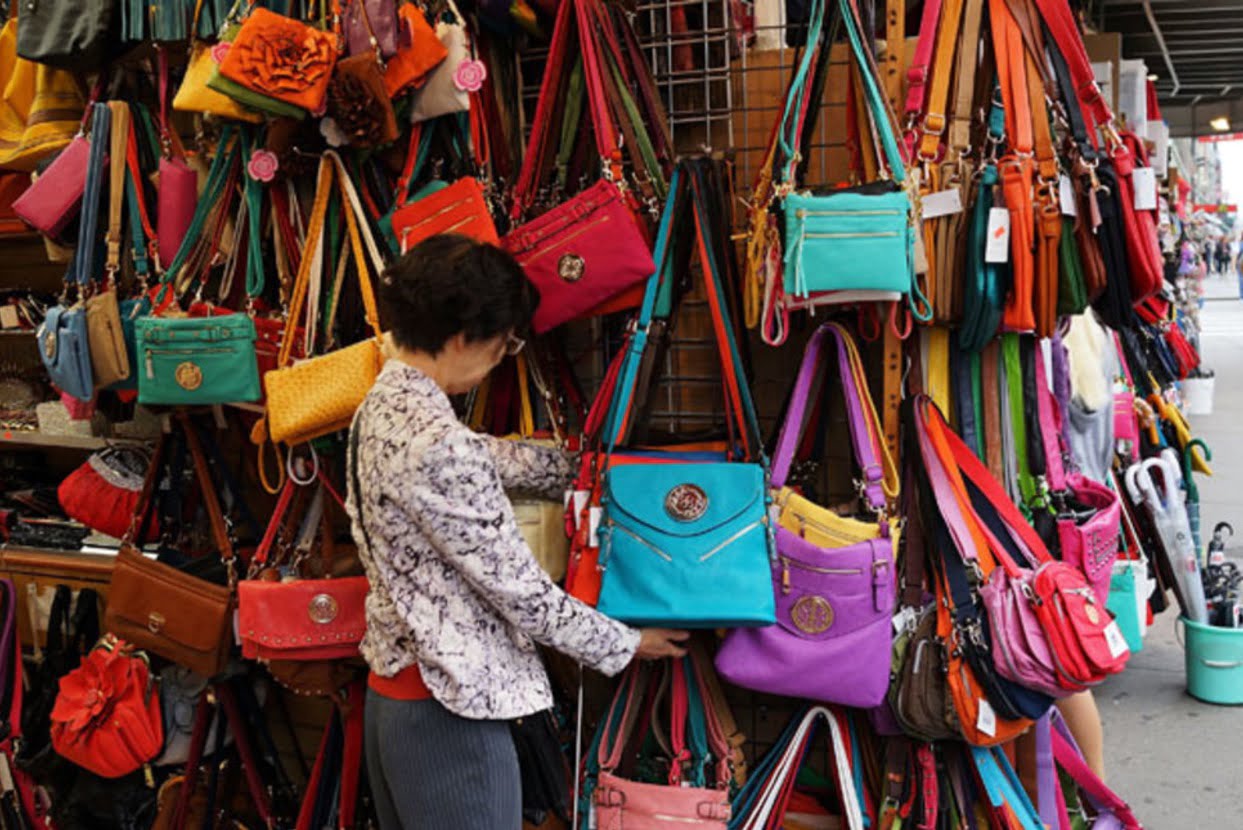
Courtesy of Spencer Platt/Getty Images
Here at PurseBop, we have a lot of respect for luxury brands and understand the skill and effort required to create luxury products. We also understand the difficult feat of acquiring and maintaining them. Therefore, we have decided to put together a guide for everything you need to know about fake designer bags to help you from ever landing a dud in your collection. Here’s what you can expect from this guide:
I. Counterfeit Products and Social Pressure
II. How to Distinguish Real from Fake
III. The World of Counterfeit Goods
IV. Dark Side of Counterfeit Purchases
V. How Luxury Brands are Fighting Back
VI. Conclusion
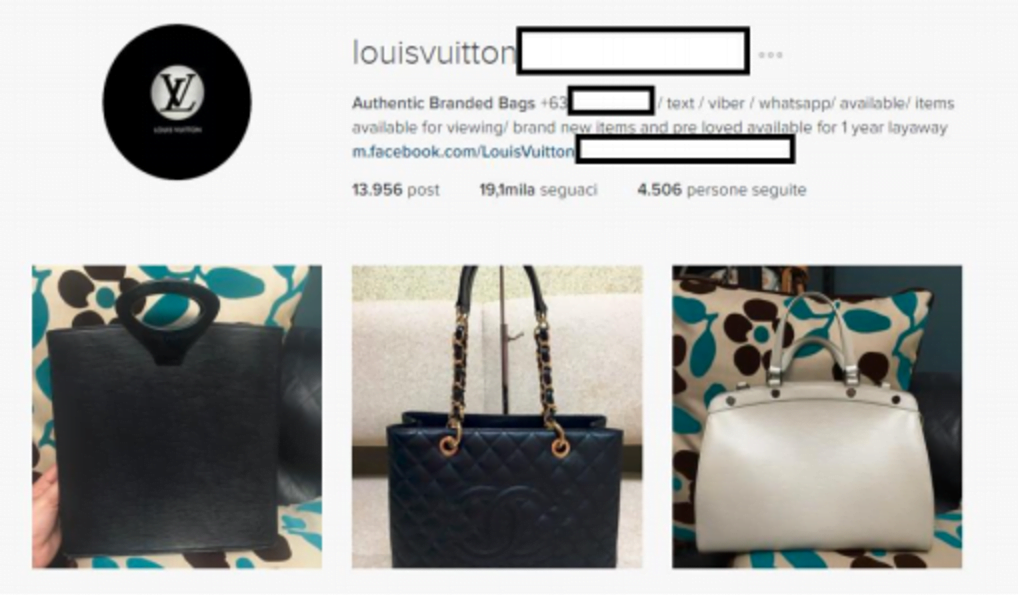
Courtesy of The Washington Post
Counterfeit Products and Social Pressure
In this day and age, social media rewards a public display of luxury possessions. There’s pressure for the stylish, ambitious woman to provide endless luxury wear eye candy for followers to admire and envy. Sometimes, there’s a real pressure to keep up, especially if your public persona is tied to luxury style that’s of-the-moment and dynamic.
Given this culture, one can see why buying a masterful counterfeit is so tempting, especially if you’re hoping to primarily display it on Instagram, where it’s much easier to mask the authenticity of a product. In fact, a new study from The Washington Post reveals that of all Instagram posts featuring luxury products, 20% of those goods are fakes. Research suggests that 3 million consumers a year purchase counterfeit luxury products…Surprising, right??
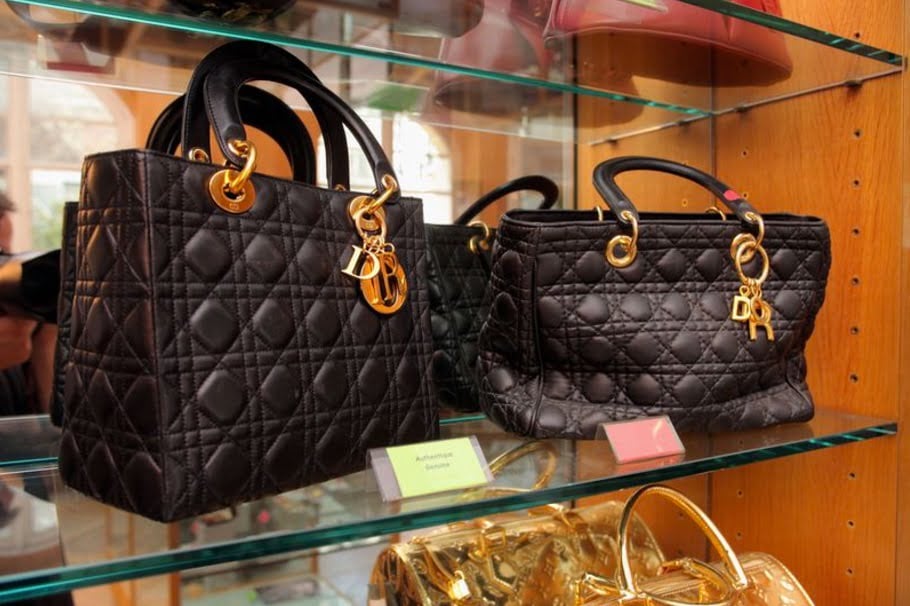
From the Paris Counterfeit Museum. Courtesy of Getty Images
How to Distinguish Real from Fake
Oftentimes, fakes are pretty easy to distinguish from the real thing. We can all conjure up the image of the fake Louis Vuitton monograms, the “Chanel” bags with the enormous fake C’s toted proudly by young teenage girls. However, sometimes, counterfeits are extremely difficult to distinguish from the real product. These are called “superfakes.” Here are some tips we have compiled to help you distinguish a genuine product from a superfake.
- Check for plastic– If a bag has clear plastic covers over the handles, be wary as this is often a sign of a counterfeit.
- Don’t buy a bag with a hang tag– A shield shaped leather swatch is often a red flag.
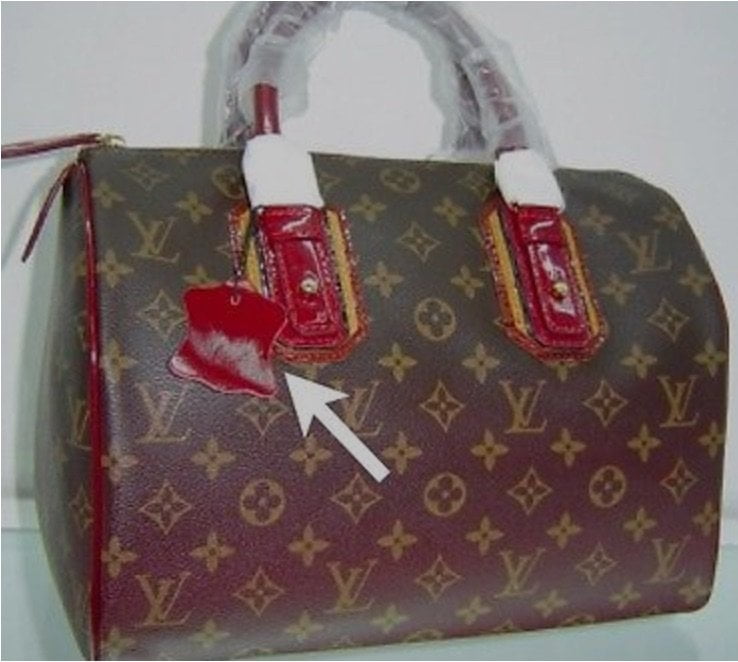
Example of a Hang Tag and Plastic Wrap. Courtesy of Ebay.com.
- Look inside – Counterfeiters are best at imitating the outside of the bag, but are more likely to be sloppy on the inside. Sometimes counterfeiters will make the inside label crooked…Chanel artisans would never let that slide.
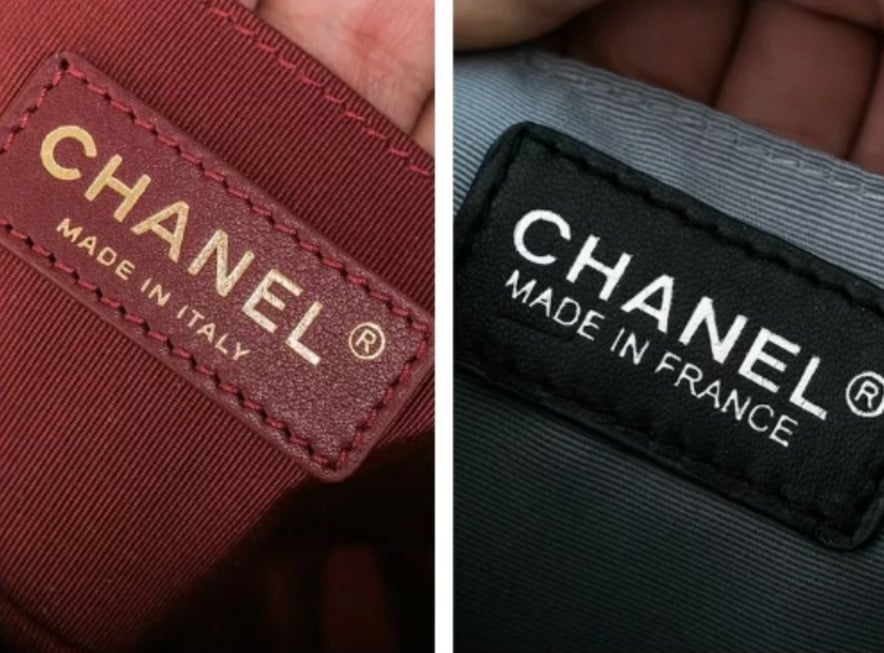
Crooked inside label on the right. Courtesy of Racked.com
- Authentication card – Just because a bag has an authentication card doesn’t mean it’s real. Look carefully at the font, the hologram sticker, and terminology.
- Proper Identification Stamp – For Louis Vuitton, the letters are code for the country in which the bag was made, the numbers say when it was made. The first and third letters stand for the week in the year it was made, while the second and fourth indicate the year. For Hermès, the authentication stamp is composed of various letters and numbers and is located in different places depending on the bag. If you’re curious about where the authentication stamp would be located on a Birkin bag, we’ve got plenty of information for you (read: Where’s the H Stamp Gone?).
- Stitching – Stitching on a fake bag will often be sloppy and not straight.
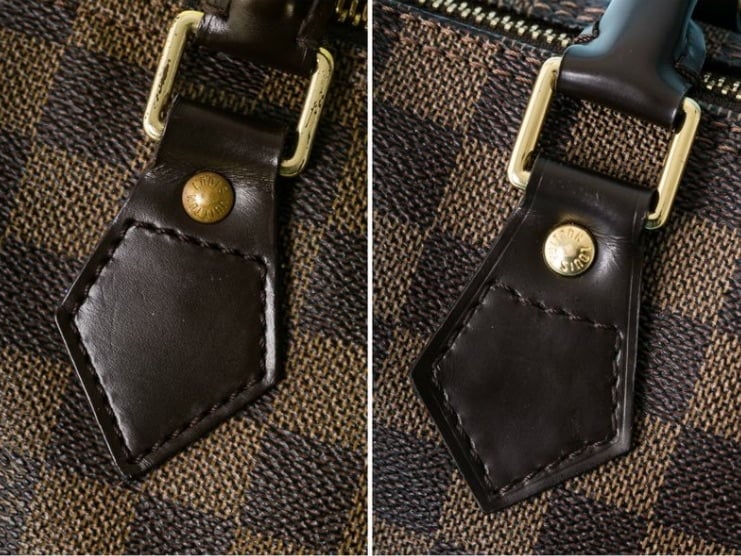
Real vs. Fake stitching. Racked.com.
- Hermès label stamp – On an authentic Hermès, the label stamp is at the top of the bag, close to the stitching. In a fake, the stamp may be by the lock, which is a dead giveaway.
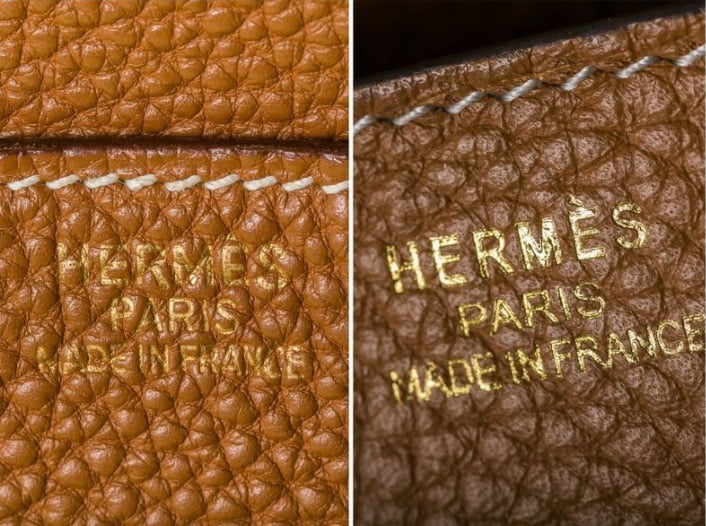
Real and Fake Hèrmes tags. Courtesy of Racked.com.
- Purchase Method – Apart from physical properties of the bag, which may be difficult to analyze with an untrained eye, the way you purchase the bag is paramount to ensuring its authenticity. If a seller insists on communicating over WhatsApp or WeChat, or only provides stock images to advertise their products…beware.
- Common Sense and Intuition – In general, trust your gut and use your common sense. If the price of a bag seems too good to be true, it probably is.
If you are interested in buying a second hand purse online, check out PurseBop’s guide to buying on the second hand market!
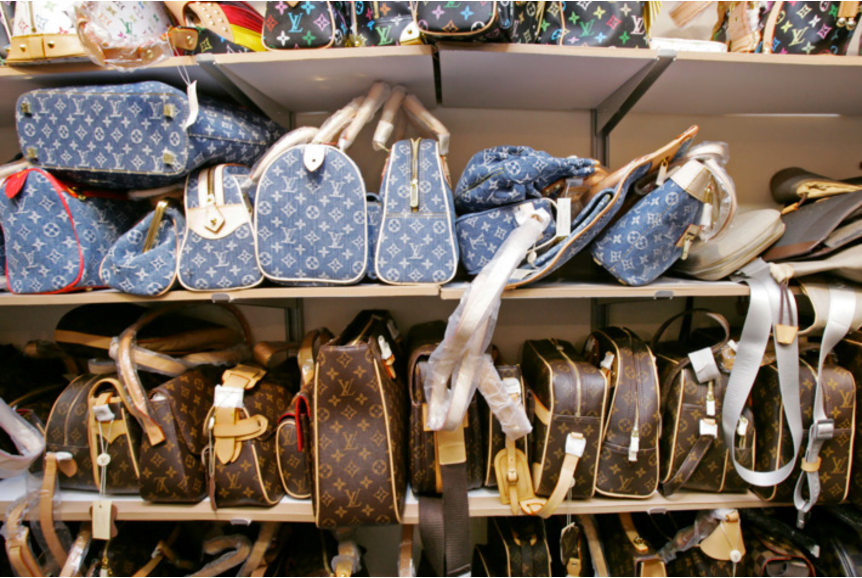
Courtesy of Bloomberg/Getty Images
The World of Counterfeit Goods
The world of acquiring expert counterfeit bags has strange parallels to real luxury shopping. Similarly to how you may have a SA in a real luxury boutique, for fake goods, you may have a relationship with a seller who keeps you updated on the latest opportunities. In addition, purchasing a counterfeit luxury bag might demand a lot of research beforehand. Like luxury good consumers, buyers of fakes educate themselves about the best deals, the current market, and even scour Instagram for the most versatile option.
More interesting information provided by the Washington Post report includes an account of the way automatic intelligence (AI) and bots are used to market fake luxury goods on Instagram and other social media. As a way to dupe law enforcement, these bots and algorithms are able to post from multiple Instagram accounts at once, run 24/7, and spam social media constantly. The ability to post at a high volume allows for access to more customers.
Dark Side of Counterfeit Purchases
Now you might think, “I know it’s dishonest to buy a fake Chanel Boy Bag to bring to my event, but what’s really the harm? I’m basically just supporting local businesses.” The ugly truth is that purchasing counterfeit handbags means endorsing a whole slew of crimes and an industry that is causing a great deal of harm and participating in illegal and immoral practices (Read: Luxury News Bulletin – Handbag Crime). Most counterfeit goods are produced in sweatshops, oftentimes run by organized crime. Profits from these goods oftentimes fund drug dealing and other crimes. In addition, sweatshops frequently employ children with inhumane pay and conditions. The purchase of counterfeit products also means contributing to job losses. When real manufacturers struggle to make a profit from their products, the lowest workers suffer most.
Counterfeit goods are not regulated by government agencies, which means their safety is not guaranteed. If you unknowingly purchase a fraud and then attempt to resell it, you are committing a federal crime.
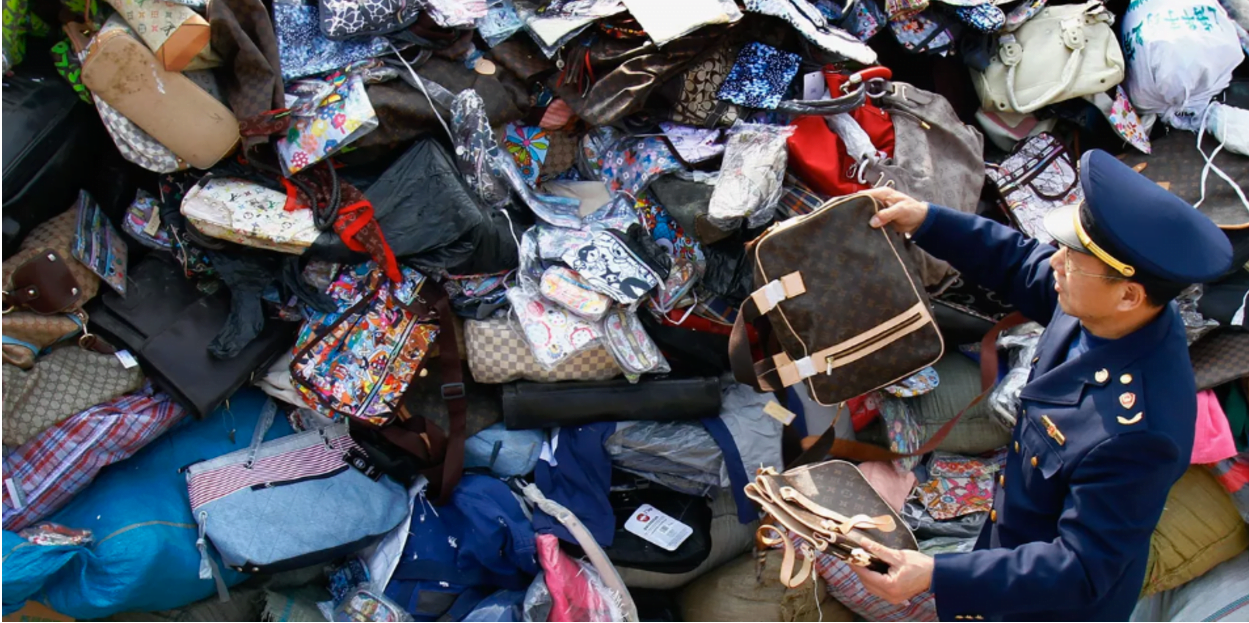
Courtesy of Getty Images
How Luxury Brands are Fighting Back
There are some who might think, a purchase of a counterfeit bag won’t hurt Louis Vuitton and other powerful luxury brands. Some might even buy replicas in disdain of large luxury brands. Another major reason why the production of counterfeit goods is a problem is that these producers and merchants are cashing in on someone else’s ideas– a form of theft.
Big brands such as Louis Vuitton have gone to great lengths to ensure that counterfeit producers are stopped. In June of 2009 Louis Vuitton won a huge lawsuit against eBay. Many people from the fashion industry and beyond are pushing for legislation that makes purchasing a counterfeit bag illegal. In 2012, a campaign called “You Can’t Fake Fashion” sold exclusive designer tote bags on eBay to raise awareness about the counterfeit purse industry.
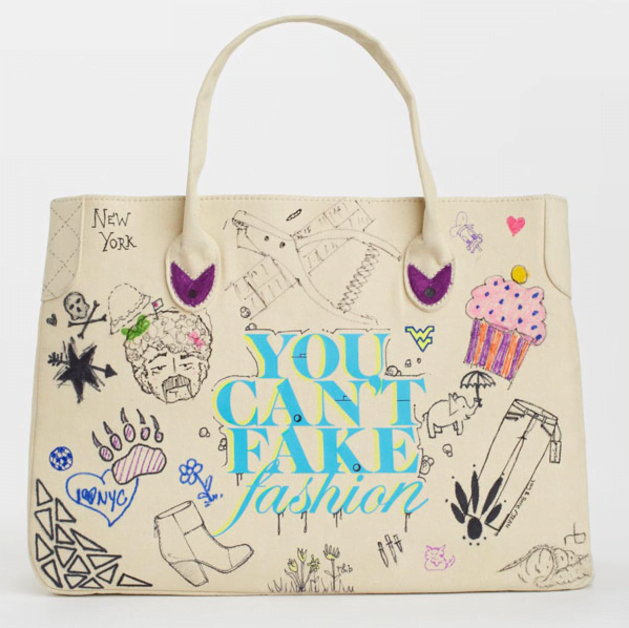
Courtesy of Getty Images
Read more about the luxury brand fight back in the articles below:
Conclusion
In the end, buying a handbag that you’ve been eyeing for years (with no shortcuts and in the most honest way possible) will ultimately give you more satisfaction than buying a counterfeit bag. Though you might feel pressure from social media to have a new handbag for every season, there are those of us at PurseBop that are stylish and happy with less than a dozen carefully curated pieces (Read: Saving to Splurge).
The artisans at major luxury brands will provide craftsmanship and a level of excellence that will be impossible to find with fake goods. The real luxury good will appeal to the senses in a way that a fake never could. Though it’s definitely understandable to experience sticker shock, we at PurseBop firmly believe that the splurge is worth it in the end (Read: Should a Bag be an Investment?).
We hope this was helpful! Tell us what you think in the comments on BopTalk.
Read related articles below:
Luxury News Bulletin – Handbag Crime
10 Useful Tips for Buying Pre-owned Bags
New App Calculates Resale Value of Designer Handbags
Should a Bag be an Investment?
Louis Vuitton Hunts Down Toronto Flea Market
Gucci Cracks Down on Fakes
Is that Birkin Real? eBay Launches Authentication Program
Love PurseBop
XO
Updated: August 5th, 2017



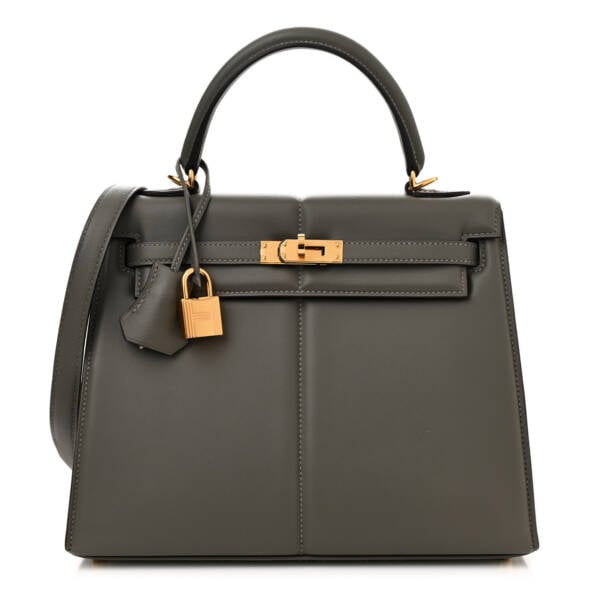
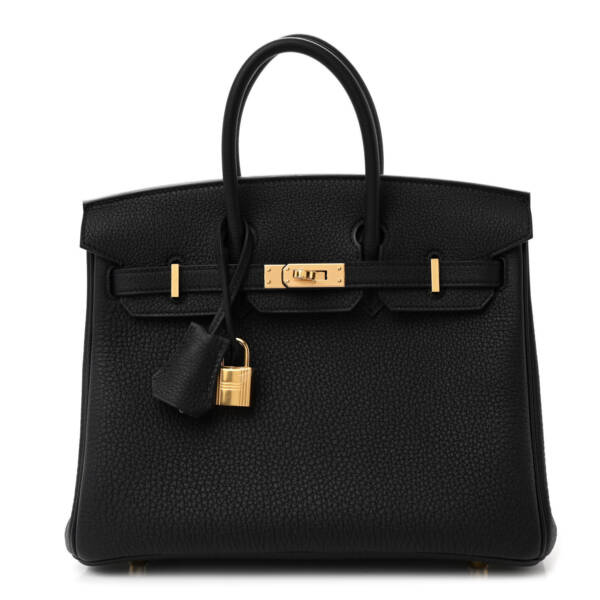
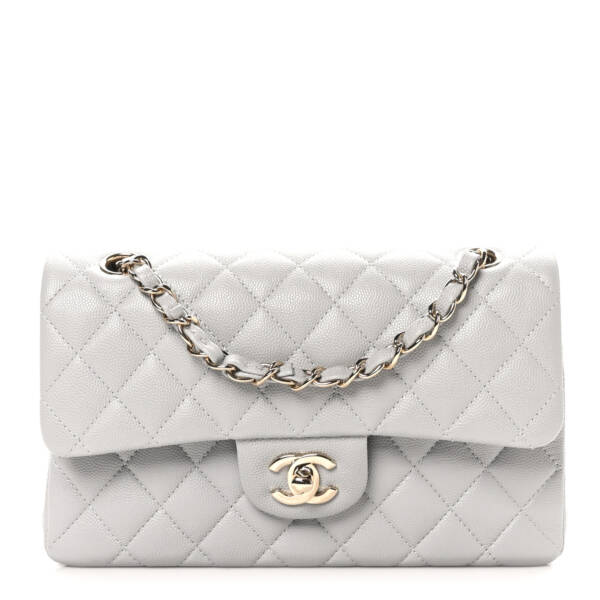
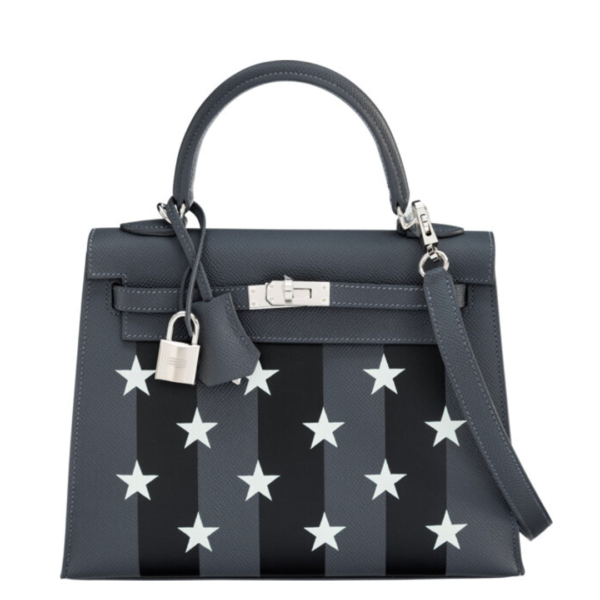
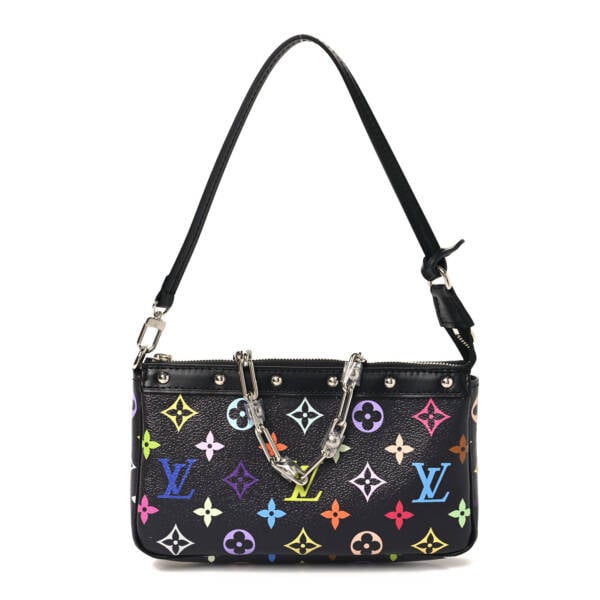
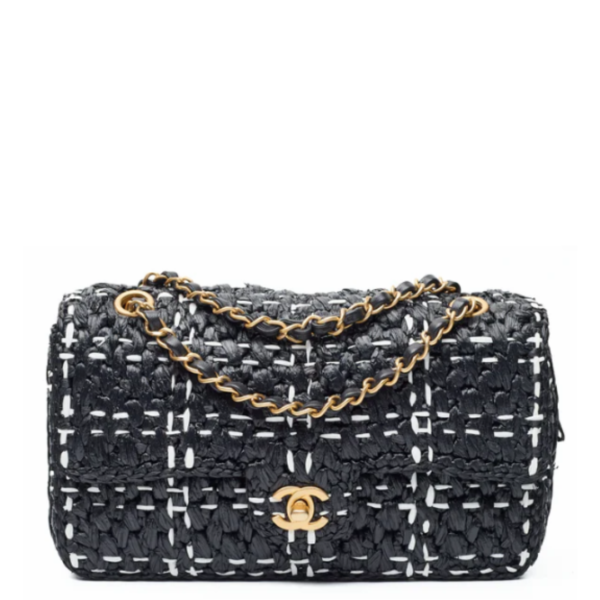
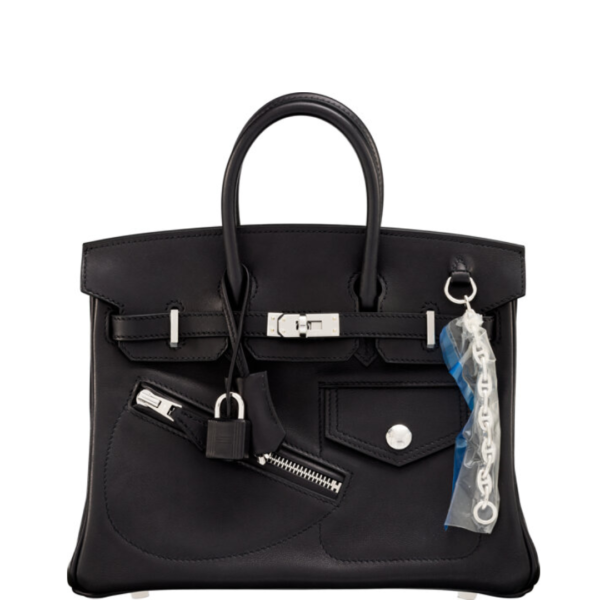
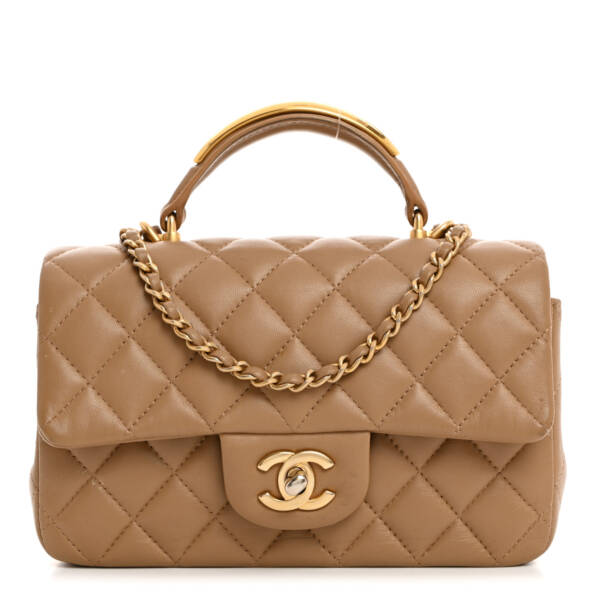
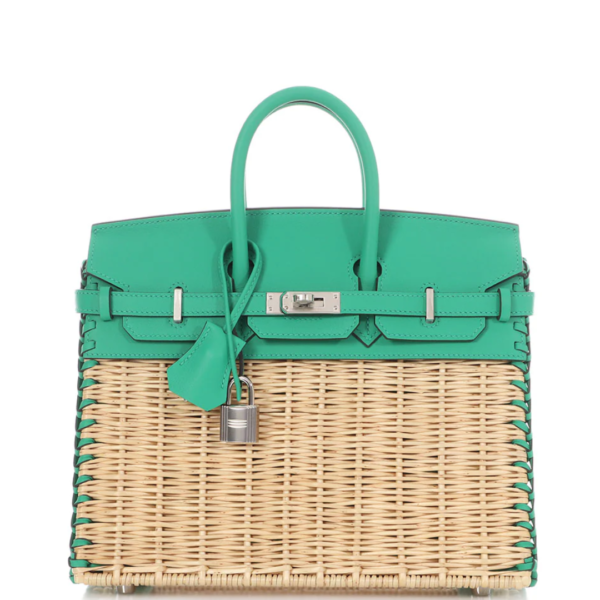
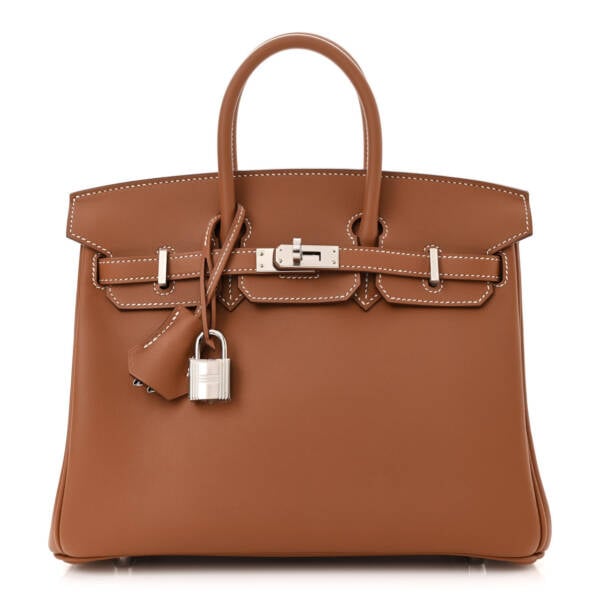

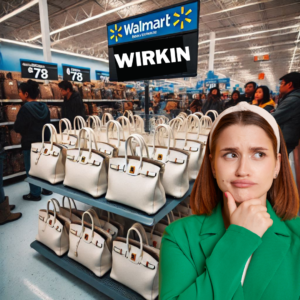
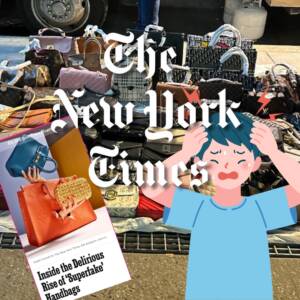
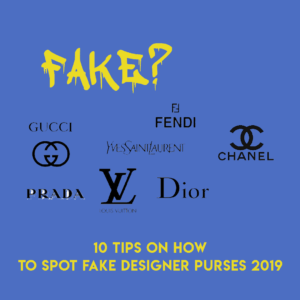
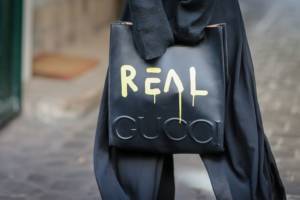
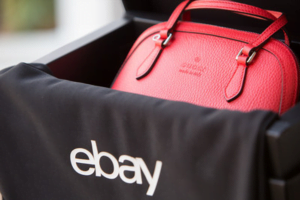


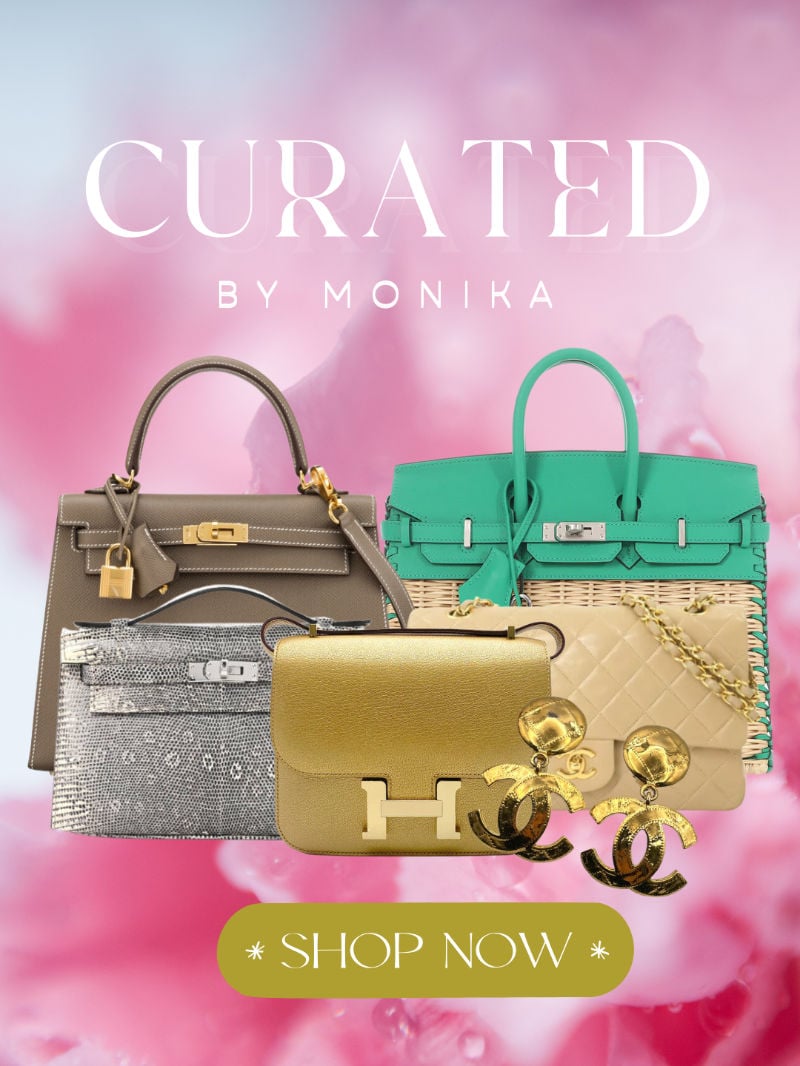
Comments
5 Responses to “How to Spot a Fake Designer Bag 101 Guide”
❤️️❤️️❤️️❤️️❤️️
Luz virtton i’ love ❤️
Stop posting old articles
Great article M. The best way to stay away from knockoffs is to buy directly from the designer’s store or authorized resellers… unfortunately not all of us can do so and the love for designer bags makes us buy preloved items (everyone knows that’s my case and I’m not ashamed of saying it ????) but to buy second hand bags we have to be EXTRA careful and all your tips are very helpful ???????? We should always ask for detailed pics of the bag, see prior to buying if we can return it if it isn’t what we expected (in case we buy it online), ask as many questions as we can about it, ask for experts help on bag forums (they really help) and like you also said, we have to trust our gut… if it doesn’t seem right, it’s not worth risking…. I have been waiting for many many years now for the opportunity to buy another Chanel bag that I can afford, all the ones I’ve come across my gut told me to stay away, and so I’ll continue waiting and saving for the day the right one comes along… I’d rather wait and be sure I’m buying the real thing than take the risk. ????
What do you think about about brands like Parody Officiale (or however it’s spelled) cashing in on fakes?